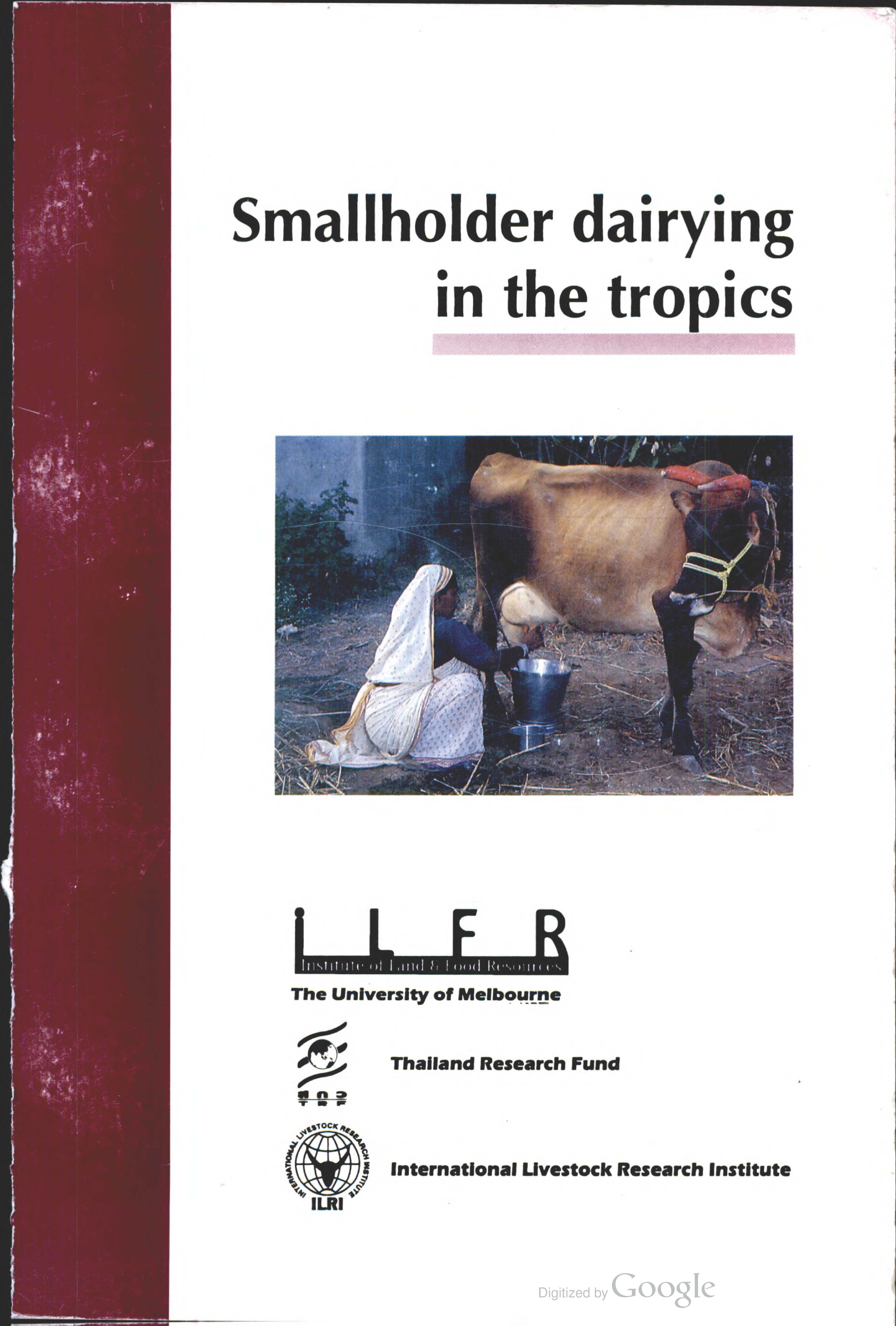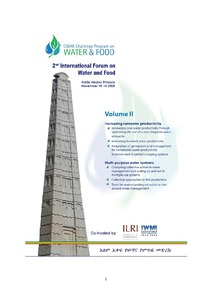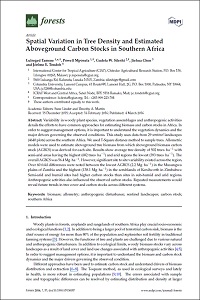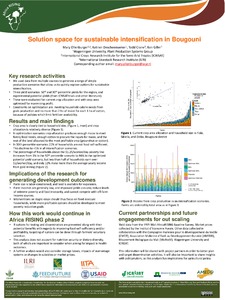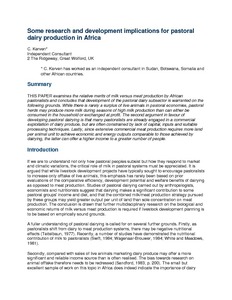terras de pastagem
AGROVOC URI:
Simulated yields and water productivity of rainfed grain crops in the Volta Basin: fertilizer impact
Stimulating milk production in milk-deficit countries of Africa and Asia
Discusses issues in the development of dairying in Africa & Asia, outlining main approaches employed in the organization of production, and the need to take into consideration five interrelated factors in dairy development strategies, viz, the supply of dairy stock, animal health, fodder systems, marketing arrangements and training of farmers; also points out the need for research, and institutional support in the form of advisory & extension services as well as credit provision to assist in dairy development.
Spatial variation in tree density and estimated aboveground carbon stocks in Southern Africa
Variability in woody plant species, vegetation assemblages and anthropogenic activities derails the efforts to have common approaches for estimating biomass and carbon stocks in Africa. In order to suggest management options, it is important to understand the vegetation dynamics and the major drivers governing the observed conditions. This study uses data from 29 sentinel landscapes (4640 plots) across the southern Africa. We used T-Square distance method to sample trees.
Spotting East African mammals in open savannah from Space
Knowledge of population dynamics is essential for managing and conserving wildlife. Traditional methods of counting wild animals such as aerial survey or ground counts not only disturb animals, but also can be labour intensive and costly. New, commercially available very high-resolution satellite images offer great potential for accurate estimates of animal abundance over large open areas. However, little research has been conducted in the area of satellite-aided wildlife census, although computer processing speeds and image analysis algorithms have vastly improved.
Some research and development implications for pastoral dairy production in Africa
Examines the relative merits of milk versus meat production by African pastoralists. Discusses the implications for livestock development policy.
Soil fertility under native cerrado and pasture in the Brazilian savanna
In the Brazilian savanna, there is a risk that soil fertility of pastures declines to a level below that of the native savanna because of low fertilizer application. To evaluate biophysical pasture sustainability we compared regularly fertilized productive pasture (PP), degraded pasture fertilized 13 yr previously (DP), and native savanna (Cerrado, CE) in an on-farm experiment. We determined (i) biomass productivity of the pastures and (ii) nutrient concentrations in Anionic Acrustoxes from three plots under each of CE, DP, and PP.
Stakeholders mapping, analysis and engagement in southern Mali
Spatial analysis for investment targeting: Pilot tool
Soil microbial biomass in semi-arid-communal sandy rangelands in the Western Bophirima district, South Africa
Soil microbial biomass is considered as an important early indicator of changes that may occur
in the long term with regard to soil fertility and constitutes an important source and sink of nutrients. In
South Africa, rangeland monitoring has mostly focused on assessing changes of aboveground vegetation
in response to land uses effects, but the associated changes at belowground soil level remain a topic of
further research. The aim of this study was to explore soil microbial biomass at three sites under
State of Climate Change Adaptation and Mitigation Efforts for Agriculture in Bhutan
Bhutan is least developed, mountainous and landlocked country in the eastern Himalayan range with a population of over 600,000. However its population and ecosystems are vulnerable to climate change. Despite a high level of environmental protection and awareness, Bhutan has become a victim of the global impacts of climate change caused by emissions in other countries. There is little historical climate data available in Bhutan; current records date back only to 1994. Consequently, the future climate scenario for Bhutan is uncertain.

